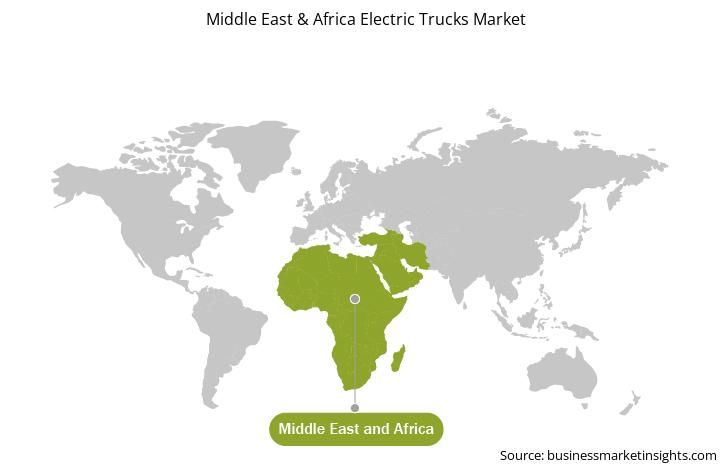The electric trucks market is growing due to the rising trend of self-driving trucks. Autonomous driving and electromobility are key fields for the transport sector's future. There are plenty of examples of applications for both fields, whether trucks, cars, buses, or even construction machinery, such as excavators and wheel loaders. However, linking the two remains the exception, even though this fusion offers the greatest potential economically and ecologically, especially in the truck and transport sector. Top original equipment manufacturers (OEM), such as Tesla, Volvo, Vera, and Daimler, have developed self-driving electric trucks. Startups, including Embark, Einride, TuSimple, and Ike (Nuro), have also started developing self-driving electric trucks. Waymo had started testing its self-driving trucks. Self-driving electric truck technology will create market opportunities for electric truck manufacturers in the long run due to the various advantages, such as easy use and the presence of value-added features.
With new features and technologies, vendors can attract new customers and expand their footprints in emerging markets. This factor is likely to drive the MEA electric trucks market at a promising CAGR during the forecast period.
Strategic insights for the Middle East & Africa Electric Trucks provides data-driven analysis of the industry landscape, including current trends, key players, and regional nuances. These insights offer actionable recommendations, enabling readers to differentiate themselves from competitors by identifying untapped segments or developing unique value propositions. Leveraging data analytics, these insights help industry players anticipate the market shifts, whether investors, manufacturers, or other stakeholders. A future-oriented perspective is essential, helping stakeholders anticipate market shifts and position themselves for long-term success in this dynamic region. Ultimately, effective strategic insights empower readers to make informed decisions that drive profitability and achieve their business objectives within the market.
| Report Attribute | Details |
|---|---|
| Market size in 2022 | US$ 284.43 Million |
| Market Size by 2028 | US$ 959.13 Million |
| Global CAGR (2022 - 2028) | 22.5% |
| Historical Data | 2020-2021 |
| Forecast period | 2023-2028 |
| Segments Covered |
By Propulsion
|
| Regions and Countries Covered | Middle East and Africa
|
| Market leaders and key company profiles |
The geographic scope of the Middle East & Africa Electric Trucks refers to the specific areas in which a business operates and competes. Understanding local distinctions, such as diverse consumer preferences (e.g., demand for specific plug types or battery backup durations), varying economic conditions, and regulatory environments, is crucial for tailoring strategies to specific markets. Businesses can expand their reach by identifying underserved areas or adapting their offerings to meet local demands. A clear market focus allows for more effective resource allocation, targeted marketing campaigns, and better positioning against local competitors, ultimately driving growth in those targeted areas.

The MEA electric trucks market is segmented on the basis of propulsion type, vehicle type, range, level of automation, and country.
Based on propulsion, the market is segmented into BEV, FCV, and PHEV. The BEV segment is the dominant one in 2022 and is expected to be the fastest-growing segment during the forecast period.
Based on vehicle type, the market is bifurcated into LCVs and medium & HCVs. The LCV segment is the dominant one in 2022 and is expected to be the fastest-growing segment during the forecast period.
Based on range, the market is segmented into less than 200 miles and more than 200 miles. The more than 200 miles segment has emerged as the dominating one in 2022 and is expected to be the fastest-growing segment during the forecast period.
Based on level of automation, the market is segmented into semi-autonomous and fully autonomous. The fully autonomous segment has been dominant in 2022 and is expected to be the fastest-growing segment during the forecast period.
Based on country, the regional market is segmented into South Africa, Saudi Arabia, the UAE, and the Rest of the MEA.
AB Volvo; Daimler AG; FAW Group Co., Ltd; Navistar, Inc.; PACCAR Inc.; Proterra Inc.; Rivian; Scania; and Tesla, Inc. are leading companies in the MEA electric trucks market.
The Middle East & Africa Electric Trucks Market is valued at US$ 284.43 Million in 2022, it is projected to reach US$ 959.13 Million by 2028.
As per our report Middle East & Africa Electric Trucks Market, the market size is valued at US$ 284.43 Million in 2022, projecting it to reach US$ 959.13 Million by 2028. This translates to a CAGR of approximately 22.5% during the forecast period.
The Middle East & Africa Electric Trucks Market report typically cover these key segments-
The historic period, base year, and forecast period can vary slightly depending on the specific market research report. However, for the Middle East & Africa Electric Trucks Market report:
The Middle East & Africa Electric Trucks Market is populated by several key players, each contributing to its growth and innovation. Some of the major players include:
The Middle East & Africa Electric Trucks Market report is valuable for diverse stakeholders, including:
Essentially, anyone involved in or considering involvement in the Middle East & Africa Electric Trucks Market value chain can benefit from the information contained in a comprehensive market report.